Dry Eye
Medically Reviewed by: Dr. Michael Gordon, MD, Board-Certified Ophthalmologist
Last Updated: September 8, 2025
Editorial Review: Gordon Schanzlin New Vision Institute Medical Team
It is estimated that more than 27 million Americans suffer from dry eyes, and that number will likely continue to grow with our increasing screen time and reliance on smartphones, tablets, and laptops. The experienced team at Gordon Schanzlin New Vision Institute is committed to diagnosing and treating dry eye in San Diego, as well as educating patients about dry eye symptoms and treatment options for chronic dry eye disease.

- Dry Eye Treatment and Diagnosis in La Jolla, San Diego
- Patient Success Stories
- What Is Dry Eye Syndrome?
- Chronic Dry Eye Symptoms
- Dry Eye Risk Factors
- Meibomian Gland Dysfunction (MGD): The Primary Culprit
- Understanding Tear Film Anatomy
- Advanced Diagnostic Approach
- Comprehensive Dry Eye Treatment Options
- Insurance Coverage and Financing Options
- Potential Risks and Complications
- Complications of Untreated Dry Eye
- FAQs About Dry Eye
Dry Eye Treatment and Diagnosis in La Jolla, San Diego
Gordon Schanzlin New Vision Institute specializes in comprehensive dry eye diagnostic examination and treatment in La Jolla, California. Our team of board-certified ophthalmologists combines decades of experience with state-of-the-art technology to provide personalized treatment plans that address the root causes of your dry eye symptoms. Contact our office to schedule a consultation for dry eye treatment.
“We’ve seen remarkable improvements in our patients’ quality of life when we address dry eye disease comprehensively, treating not just the symptoms but the underlying causes,” says Dr. Michael Gordon, a leading ophthalmologist at Gordon Schanzlin New Vision Institute with over 40 years of clinical experience.
Patient Success Stories
“I went to this office for my dry eyes. I was impressed with the customer service provided from the moment I walked through the front door. Liv and Grayson at the front desk greeted all patients with a smile and were very efficient in their duties. I saw Wendy Jones, OD, who was professional, knowledgeable and explained what was going on with my dry eyes. Also, my interaction with all staff members in passing was a pleasant experience. I highly recommend this office.” – Verified Patient Review
“I had a very thorough state of art eye exam by Dr. Geffen. He took a lot of time with me and answered my questions. Very impressive. Brandy and Jani took a lot of time and interest to help me select a pair of glasses and measure me for progressive lenses. I definitely felt like a VIP guest with their attention to detail and great attitudes. Overall it was a great experience. I highly recommend Gordon Schanzlin New Vision Institute.” – Verified Patient Review

What Is Dry Eye Syndrome?
Dry Eye Syndrome, also known as Dry Eye Disease (DED), is characterized by insufficient moisture or lubrication on the surface of the eyes. This chronic condition affects millions of people worldwide and can significantly impact daily activities like reading, driving, and computer work.
The causes of Dry Eye Syndrome may include:
- Inadequate tear production from the lacrimal glands
- Rapid tear evaporation due to oil deficiency
- Poor quality tears lacking essential components
- Inflammation of the ocular surface
- Dysfunction of the meibomian glands
According to the National Eye Institute, dry eye disease becomes more common
Trusted Source
Dry Eye Causes
National Eye Institute
Go to Source
with age,
affecting approximately
Trusted Source
Dry Eye Infographic
National Eye Institute
Go to Source
5 million
Americans aged 50 and older.
Chronic Dry Eye Symptoms
Many patients are surprised to learn the full range of dry eye symptoms. Interestingly, watery eyes can actually indicate dry eye syndrome, as your body produces excess tears to compensate for inadequate moisture. Common symptoms
Trusted Source
Dry Eyes
Mayo Clinic
Go to Source
include:
- Persistent redness and irritation
- Burning or stinging sensations
- Itching and discomfort
- Excessive tearing or watery eyes
- Eyes feeling tired, especially at day’s end
- Fluctuating or blurry vision
- Halos around lights
- Gritty or sandy feeling in the eyes
- Mucous or stringy discharge
- Difficulty with night vision
- Light sensitivity (photophobia)
- Contact lens discomfort
- Difficulty reading or using digital devices
Dry Eye Risk Factors
While dry eye syndrome can affect anyone,
Trusted Source
Dry Eyes
Cleveland Clinic
Go to Source
certain factors
increase your likelihood of developing this condition:
Lifestyle and Environmental Factors
- Using digital devices for more than 2 hours per day
- Exposure to environmental irritants like Santa Ana winds
- Air conditioning or heating systems
- Low-humidity environments
- Prolonged reading or computer work
Age and Health Factors
- Age 50 or older
- Hormonal fluctuations, particularly during menopause
- Medical conditions, including diabetes, rheumatoid arthritis, thyroid disorders, Sjögren’s syndrome, and lupus
- Eye conditions such as blepharitis or allergic eye disease
- Certain medications, including birth control pills, blood pressure medications, diuretics, antidepressants, and antihistamines
- Family history of meibomian gland dysfunction
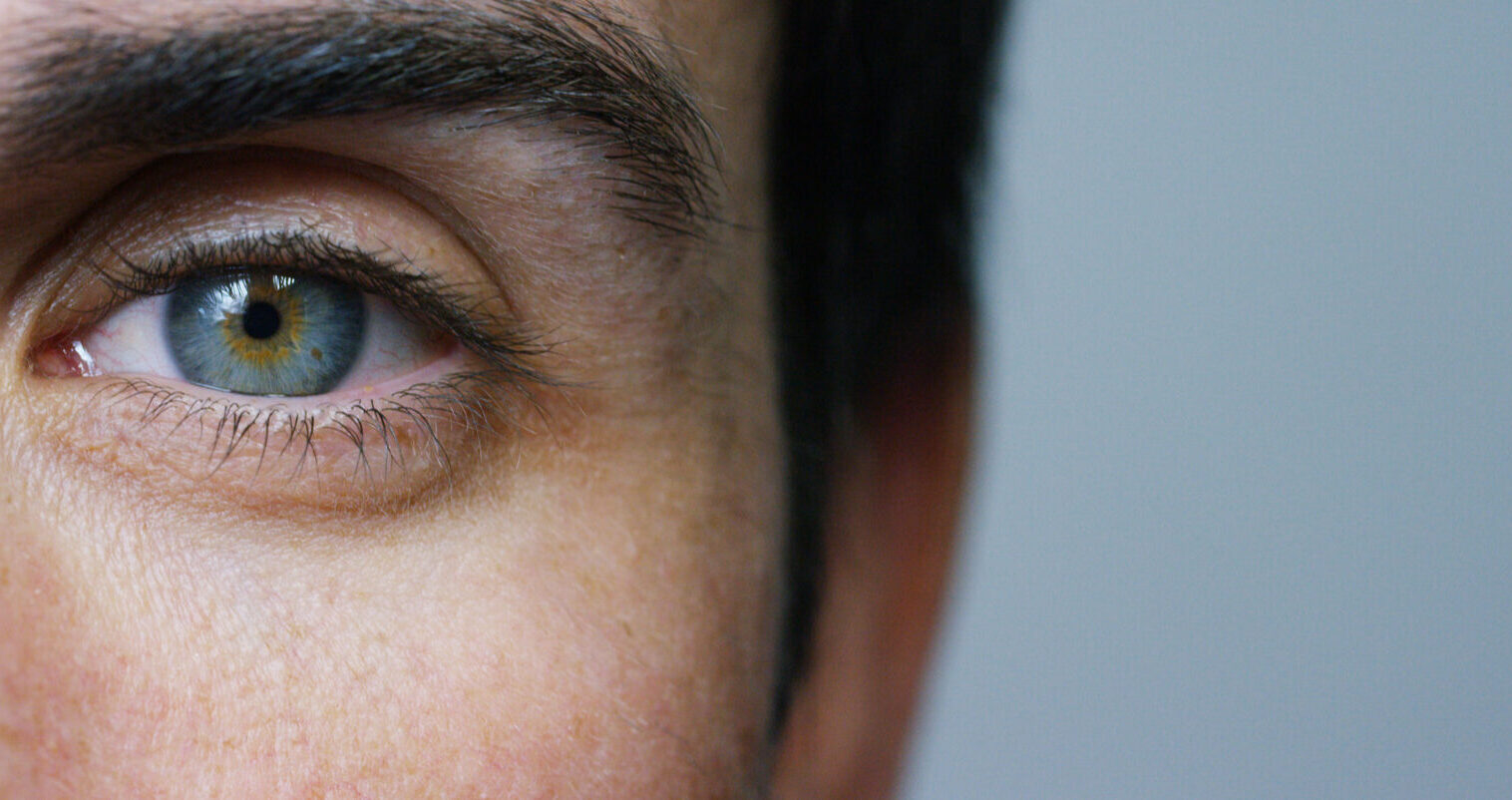
Meibomian Gland Dysfunction (MGD): The Primary Culprit
Meibomian gland dysfunction is the
Trusted Source
Dry Eye Disease Associated with Meibomian Gland Dysfunction: Focus on Tear Film Characteristics and the Therapeutic Landscape
Ophthalmology and Therapy
Go to Source
leading cause
of dry eye disease, according to research published in Ophthalmology and Therapy. These tiny oil-producing glands in your eyelids create the lipid layer of your tear film, which prevents rapid evaporation and keeps your eyes properly lubricated.
Over time, these glands can become blocked with thickened oils, reducing their ability to produce the essential lipids your tears need. This dysfunction leads to:
- Rapid tear evaporation
- Unstable tear film
- Increased eye surface inflammation
- Persistent dry eye symptoms
Understanding Tear Film Anatomy
Your tear film consists of three essential layers that work together to maintain eye health:
Lipid Layer (Outermost)
Produced by meibomian glands, this oily layer prevents tear evaporation and maintains tear film stability.
Aqueous Layer (Middle)
The thickest layer, produced by lacrimal glands, provides moisture and contains nutrients and antibodies.
Mucin Layer (Innermost)
Produced by goblet cells, this layer helps tears adhere to the eye surface and spread evenly.
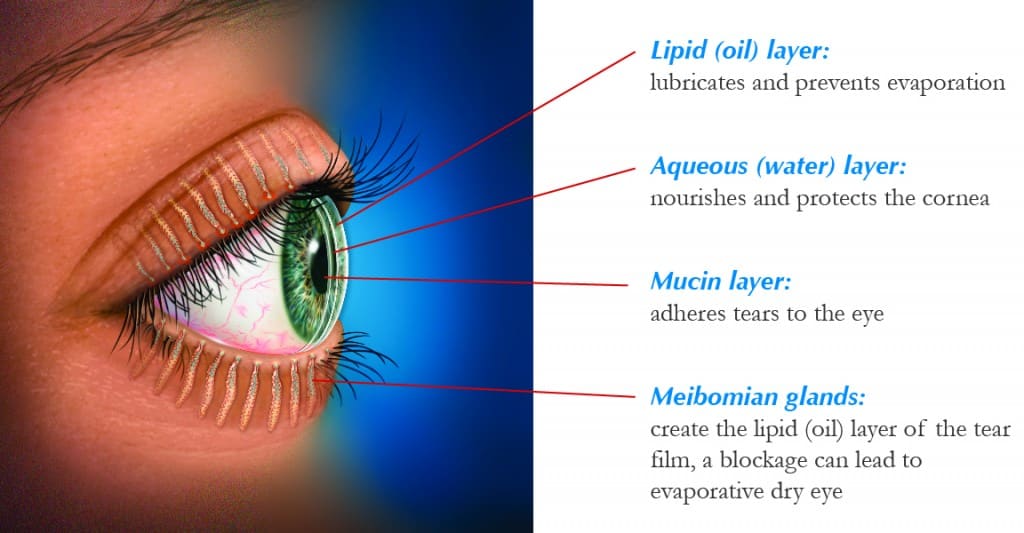
Advanced Diagnostic Approach
At Gordon Schanzlin New Vision Institute, we use comprehensive diagnostic testing to determine the specific type and underlying causes of your dry eye disease. Our evaluation may include:
- Detailed symptom assessment and medical history
- Tear film analysis to evaluate all three layers
- Meibomian gland imaging and function testing
- Ocular surface inflammation assessment
- Tear osmolarity measurement
- Comprehensive eye examination
- Evaluation for underlying systemic conditions
“Proper diagnosis is crucial for effective dry eye treatment. We take the time to understand each patient’s unique situation and develop a personalized treatment approach,” explains Dr. David Schanzlin, co-founder of Gordon Schanzlin New Vision Institute and former Professor of Ophthalmology at UCSD.
Comprehensive Dry Eye Treatment Options
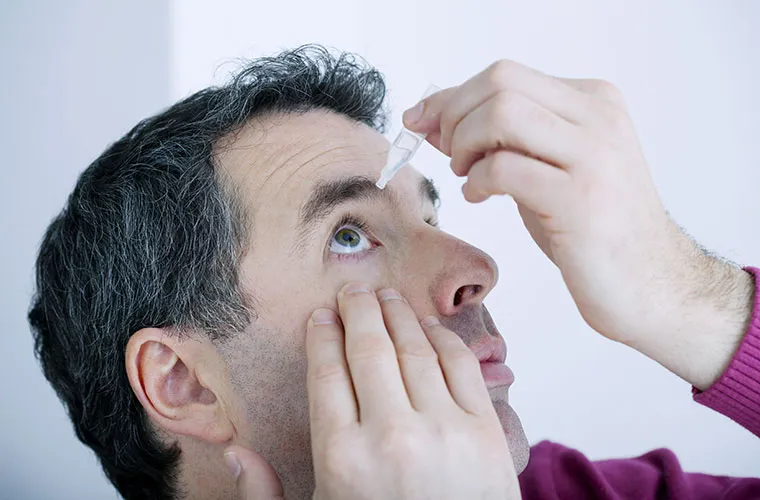
At-Home Management Strategies
Before pursuing advanced treatments, we often recommend these initial approaches:
- Stay well-hydrated by drinking plenty of water
- Use warm compresses or specialized devices like Bruder Masks
- Take omega-3 supplements such as Ocusci™ Omega or HydroEye®
- Avoid direct airflow from fans or air conditioning
- Use preservative-free artificial tears like TheraTears®
- Maintain proper humidity levels with a humidifier
- Practice regular eyelid hygiene with OCuSOFT® Lid Scrubs
- Perform conscious blinking exercises, especially during screen time
Advanced In-Office Treatments
Intense Pulsed Light (IPL) Therapy
IPL therapy represents a breakthrough in dry eye treatment, using precise light pulses to reduce inflammation around the eyes and stimulate healthy meibomian gland
Trusted Source
Intense pulsed light for treatment of dry eye disease
Mayo Clinic
Go to Source
function.
This FDA-approved treatment addresses the root causes of evaporative dry eye by:
- Reducing inflammatory markers
- Improving meibomian gland function
- Decreasing bacterial overgrowth on eyelids
- Providing long-lasting symptom relief
Treatment Protocol: Typically requires 3-4 sessions spaced 2-3 weeks apart
Duration of Relief: Most patients experience 6 months of
Trusted Source
Pulsed Light Therapy in the Management of Dry Eye Disease: Current Perspectives
Clinical Ophthalmology
Go to Source
symptom improvement
LipiFlow® is an FDA-approved procedure that uses controlled heat and gentle pressure to clear blocked meibomian glands and restore natural oil production. This 12-minute in-office treatment can provide months of relief from dry eye symptoms.
Clinical Evidence: Studies show treatment safely improves symptoms with benefits that can last months to
Trusted Source
Vectored Thermal Pulsation as a Treatment for Meibomian Gland Dysfunction: A Review Spanning 15 Years
Ophthalmology and Therapy
Go to Source
years
Treatment Duration: Single 12-minute session
Effectiveness: Significant improvement in tear break-up time and meibomian gland function
The iLux system provides targeted treatment for meibomian gland dysfunction using controlled heat and compression. This minimally invasive procedure is clinically proven to improve gland function and reduce dry eye symptoms. Learn more about Systane iLux.
Prescription Medications
RESTASIS® (Cyclosporine)
This prescription eye drop reduces ocular inflammation and helps increase natural tear production over time. Typical Timeline: Improvement seen within 3-6 months of consistent use
Success Rate: Most patients experience symptom improvement of
Trusted Source
Cyclosporine 0
Korean Journal of Ophthalmology
Go to Source
up to 50%
improvement
Xiidra® (Lifitegrast)
Xiidra® specifically targets inflammation associated with dry eye disease and can provide symptom relief within two weeks of starting treatment.
Onset of Action: Symptom improvement typically begins within 2 weeks
Clinical Studies: Proven effective in reducing both signs and symptoms of dry eye
Trusted Source
Lifitegrast: a novel drug for patients with dry eye disease
Therapeutic Advances in Ophthalmology
Go to Source
disease
Additional Treatment Options
Punctal Plugs
These tiny, biocompatible devices are inserted into tear ducts to prevent drainage and help maintain eye moisture. Punctal plugs can be temporary or permanent, depending on your specific needs.
Success Rate: Clinical
Trusted Source
How effective and safe are punctal plugs in treating dry eye disease?
Contact Lens and Anterior Eye
Go to Source
studies show
significant improvements in patient symptoms
Procedure Time: 5-10 minutes per eye
Reversibility: Temporary plugs dissolve naturally; permanent plugs can be removed if needed
Bio-tissue® Amniotic Membrane Treatment
For severe cases involving corneal damage, Bio-tissue® amniotic membrane treatment promotes healing and reduces inflammation on the eye surface.
Indications: Severe dry eye with corneal epithelial defects
Healing Time: Typically 1-4 weeks for epithelial healing
Success Rate: average success rate of 79%, with results ranging from
Trusted Source
Update on amniotic membrane transplantation
Review of Ophthalmology
Go to Source
67% to 91%
Insurance Coverage and Financing Options
Insurance Coverage: Because dry eye is a medical condition, medical insurance does cover some treatments. However, not all dry eye treatments are eligible for insurance coverage. When you come in for your consultation, we will let you know whether your treatment plan is covered by your insurance.
Financing Options:
CareCredit® Medical Financing
CareCredit® is a leader in patient-friendly medical lending and we are happy to partner with them to offer financing options that fit a variety of budgets.*
Benefits for qualified patients:
- No Interest plans: 6, 12, 18, and 24 month terms
- Extended Payment Plans up to 48 months
- Financing from $1 to over $25,000
- Quick application with instant approval notification
Click Here to Apply for CareCredit® Now!
*Subject to credit approval. Restrictions may apply.
FSA, HRA & HSA Accounts
If you have a flexible spending account (FSA), health reimbursement account (HRA), or health savings account (HSA), you can use those funds to pay for dry eye treatments and vision correction procedures. These tax-advantaged accounts can help you fit better eye health into your budget. Contact your plan administrator for details.
Potential Risks and Complications
As with any medical treatment, dry eye therapies carry potential risks that patients should understand:
IPL Therapy Risks:
- Temporary skin redness
- Rare risk of hyperpigmentation
- Eye protection is required during treatment
Prescription Eye Drop Risks:
- Temporary burning or stinging upon application
- Allergic reactions
- Potential for increased eye redness if discontinued abruptly
LipiFlow/iLux Risks:
- Temporary eyelid swelling
- Mild discomfort during treatment
- Rare risk of corneal abrasion
Punctal Plug Risks:
- Plug migration or loss
- Temporary increased tearing
- Rare risk of infection
Complications of Untreated Dry Eye
Left untreated, severe dry eye can lead to serious complication, including:
- Corneal abrasions and scarring
- Increased risk of eye infections
- Vision impairment
- Reduced quality of life
- Difficulty performing daily activities
Early intervention and proper treatment can prevent these complications and significantly improve patient outcomes.
Frequently Asked Questions About Dry Eye Syndrome
How Do I Know If I Have Dry Eye Syndrome?
A consultation with an experienced eye doctor is the best way to diagnose Dry Eye Syndrome. The doctors at Gordon Schanzlin New Vision Institute are dedicated to providing comprehensive eye care. If you are suffering from dry eyes, we will work with you to determine the root cause of your dry eye symptoms to create a personalized treatment plan. During a consultation, your doctor may:
- Evaluate and analyze your day-to-day symptoms
- Test all layers of the tear film to determine if there is a deficiency at any level
- Perform an ocular allergy evaluation
- Test meibomian gland function
- Assess eyelid anatomy for physical causes of dry eye
- Investigate for infectious causes of dry eye
- Determine if there is systemic inflammation causing chronic dry eye
Customize a treatment regimen for your specific type of dry eye
Can Dry Eye Syndrome Be Prevented?
While not all cases can be prevented due to age and genetic factors, you can reduce your risk by:
- Eating a diet rich in omega-3 fatty acids and vitamin A
- Getting adequate sleep (7-9 hours nightly)
- Staying hydrated with at least 8 glasses of water daily
- Avoiding smoking and secondhand smoke
- Taking regular breaks from digital devices (20-20-20 rule)
- Using proper lighting when reading or working
Does insurance cover treatment for dry eye?
Because dry eye is a recognized medical condition, many insurance plans cover diagnostic testing and certain treatments. Coverage varies by plan and specific treatment type. Our insurance specialists will verify your benefits and help you understand your coverage options during your consultation.
Typically Covered:
- Comprehensive eye examinations
- Prescription eye drops (RESTASIS, Xiidra)
- Punctal plugs
- Basic diagnostic testing
May Not Be Covered:
- IPL therapy
- LipiFlow treatment
- Advanced diagnostic imaging
- Nutritional supplements
If I have dry eye syndrome, why do my eyes water so much?
This common concern affects many dry eye patients. Excessive tearing often occurs as a reflex response to eye irritation caused by inadequate lubrication. When your eyes don’t have sufficient quality tears, they may produce excess watery tears to compensate, but these tears lack the proper oil content to provide lasting relief.
Is it necessary to treat dry eye?
Yes, treating dry eye is essential for several reasons:
- Prevents progression to more severe complications
- Improves quality of life and daily function
- Reduces risk of corneal damage and infections (by up to 80% with proper treatment)
- Allows for comfortable contact lens wear
- Enhances overall eye health and comfort
How Long Does Dry Eye Treatment Take to Work?
Treatment timelines vary by therapy type:
- Artificial tears: Immediate temporary relief
- Prescription drops: 2-12 weeks for full effect
- IPL therapy: 4-6 weeks after completing the series
- LipiFlow/iLux: 6-8 weeks for optimal results
- Punctal plugs: Immediate improvement in most cases
Is There a Cure for Dry Eye Syndrome?
While there is no permanent cure for dry eye syndrome, the condition can be effectively managed with proper treatment. Recent advances in dry eye therapy, including IPL treatment, LipiFlow®, and targeted medications, have significantly improved outcomes for patients with chronic dry eye disease. With appropriate care, most patients experience substantial symptom relief and improved quality of life.
Contact Gordon Schanzlin New Vision Institute
If you’re experiencing dry eye symptoms, don’t wait for the condition to worsen. Contact Gordon Schanzlin New Vision Institute, today to schedule a comprehensive dry eye evaluation. Our experienced team will develop a personalized treatment plan to help you achieve lasting relief from dry eye disease.
Gordon Schanzlin New Vision Institute
4130 La Jolla Village Dr UNIT 300 San Diego, CA 92037
Phone: (858) 455-6800
Directions: Located in the University Center area of La Jolla, easily accessible from I-5 and Highway 52. Ample parking is available.
Office Hours:
Monday – Friday: 8:00 AM – 5:00 PM
Saturday: Closed
Sunday: Closed
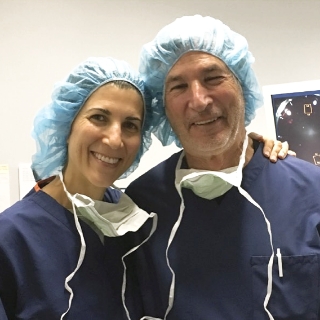
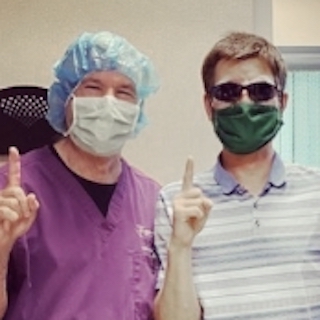
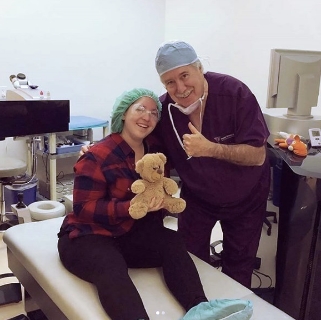
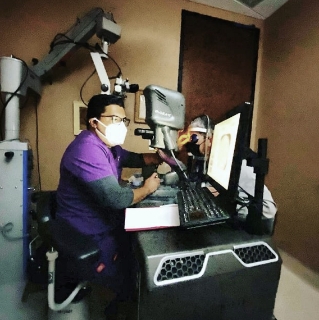
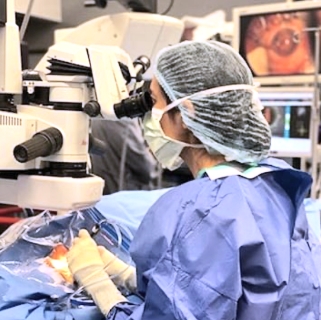
The Patient Experience
My appointment was outstanding. The doctor was thorough and courteous, and educated me about maintaining my visual acuity. Their office is beautiful and the staff was equally amazing. My wife and I look forward to being lifelong patients of theirs, and know that we are supported with comprehensive care of our vision.
Medical Disclaimer
This information is provided for educational purposes only and should not replace professional medical advice. Individual results may vary. All treatment options should be discussed with a qualified ophthalmologist. Gordon Schanzlin New Vision Institute follows all HIPAA privacy regulations and maintains the highest standards of patient confidentiality.
Editorial Review Process: This content has been reviewed by our medical team for accuracy and updated to reflect current treatment standards and research findings.
1 JAMA Ophthalmology. Prevalence and Incidence of Dry Eye and Meibomian Gland Dysfunction in the United States A Systematic Review and Meta-analysis. https://jamanetwork.com/journals/jamaophthalmology/fullarticle/2797832#. Accessed September 8, 2025.
2 National Eye Institute. Dry Eye Causes. https://www.nei.nih.gov/learn-about-eye-health/eye-conditions-and-diseases/dry-eye/causes-dry-eye. Accessed September 8, 2025.
3 National Eye Institute. Dry Eye Infographic. https://www.nei.nih.gov/sites/default/files/health-pdfs/NEI_DryEye_infographic_v1.pdf. Accessed September 8, 2025.
4 Mayo Clinic. Dry Eyes. https://www.mayoclinic.org/diseases-conditions/dry-eyes/symptoms-causes/syc-20371863. Accessed September 8, 2025.
5 Cleveland Clinic. Dry Eyes. https://my.clevelandclinic.org/health/diseases/24479-dry-eye. Accessed September 8, 2025.
6 Ophthalmology and Therapy. Dry Eye Disease Associated with Meibomian Gland Dysfunction: Focus on Tear Film Characteristics and the Therapeutic Landscape. https://pmc.ncbi.nlm.nih.gov/articles/PMC10164226/#. Accessed September 8, 2025.
7 Mayo Clinic. Intense pulsed light for treatment of dry eye disease. https://www.mayoclinic.org/medical-professionals/ophthalmology/news/intense-pulsed-light-for-treatment-of-dry-eye-disease/mac-20430229. Accessed September 8, 2025.
8 Clinical Ophthalmology. Pulsed Light Therapy in the Management of Dry Eye Disease: Current Perspectives. https://pmc.ncbi.nlm.nih.gov/articles/PMC9703996/. Accessed September 8, 2025.
9 Ophthalmology and Therapy. Vectored Thermal Pulsation as a Treatment for Meibomian Gland Dysfunction: A Review Spanning 15 Years. https://pmc.ncbi.nlm.nih.gov/articles/PMC11246355/. Accessed September 8, 2025.
10 Korean Journal of Ophthalmology. Cyclosporine 0.05% Ophthalmic Emulsion for Dry Eye in Korea: A Prospective, Multicenter, Open-Label, Surveillance Study. https://pmc.ncbi.nlm.nih.gov/articles/PMC3223702/#. Accessed September 8, 2025.
11 Therapeutic Advances in Ophthalmology. Lifitegrast: a novel drug for patients with dry eye disease. https://pmc.ncbi.nlm.nih.gov/articles/PMC6710705/. Accessed September 8, 2025.
12Contact Lens and Anterior Eye. How effective and safe are punctal plugs in treating dry eye disease? A systematic review and meta-analysis. https://www.sciencedirect.com/science/article/abs/pii/S1367048425000724. Accessed Septmber 8, 2025.
13 Review of Ophthalmology. Update on amniotic membrane transplantation. https://biotissue.com/wp-content/uploads/sites/2/2019/03/UPDATE_ON_AMNIOTIC_MEMBRANNE-min.pdf. Accessed September 8, 2025.
The doctors at Gordon Schanzlin New Vision Institute have either authored or reviewed and approved this content.
Page Updated:



